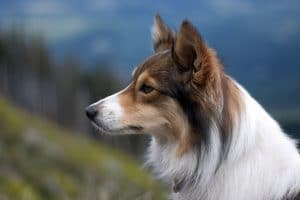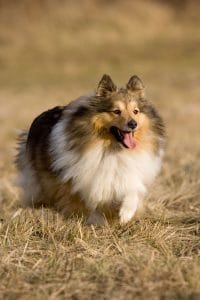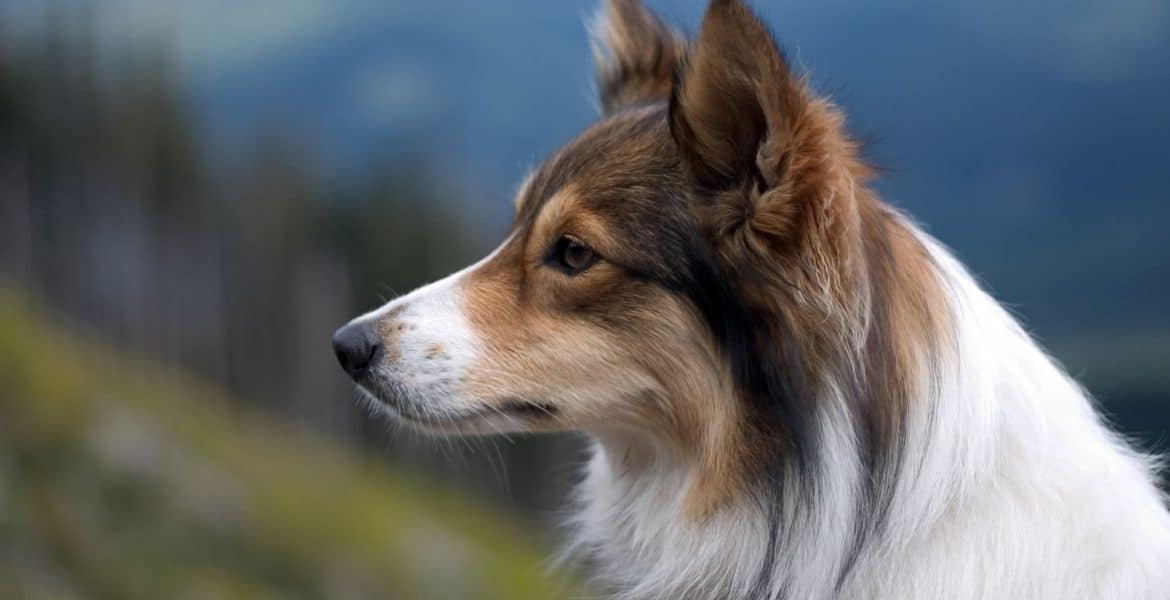 The Shetland Sheepdog looks like a miniature version of the Rough Collie, (the Lassie dog) and both dogs are descendants of Border Collies that inhabited Scotland. The Border collies were crossed with the Icelandic Yakkin, (a small dog that is now extinct), on the Scottish island of Shetland. The end result by 1700 was the well established Sheltie. The dogs were used to herd and guard the Shetland sheep flocks.
The Shetland Sheepdog looks like a miniature version of the Rough Collie, (the Lassie dog) and both dogs are descendants of Border Collies that inhabited Scotland. The Border collies were crossed with the Icelandic Yakkin, (a small dog that is now extinct), on the Scottish island of Shetland. The end result by 1700 was the well established Sheltie. The dogs were used to herd and guard the Shetland sheep flocks.
The Shetland Sheepdog was first recognized in England in 1909 and by the AKC in 1911.
The Sheltie is a small, graceful looking dog with a long flowing double coat that is shorter on the legs and head and forms a mane around the neck and chest. The outer coat is straight and harsh to the touch while the undercoat is soft and tight. Colours are blue merle, sable, and black with various amounts of white and tan. It has a long feathered tail and small furry ears that stand erect. Height is normally from 33 to 41 centimetres and Shelties can weigh any where between 5 and 14 kilograms. Lifespans for Shelties are usually between 10 to 15 years.
 This dog is fiercely loyal and loving to its family and very energetic. They will feel at home in apartment living, but must have regular exercise and room to run. They have a strong herding instinct and love to chase things, including people or cars if allowed to do so. This dog loves to please but will obey only when given firm commands by someone with the confidence of a leader. They are suitable as a family pet but should be reared with children from an early age, if properly socialized they are excellent with children. However, they are small dogs and can be quite easily injured by children because of their size so supervision is essential.
This dog is fiercely loyal and loving to its family and very energetic. They will feel at home in apartment living, but must have regular exercise and room to run. They have a strong herding instinct and love to chase things, including people or cars if allowed to do so. This dog loves to please but will obey only when given firm commands by someone with the confidence of a leader. They are suitable as a family pet but should be reared with children from an early age, if properly socialized they are excellent with children. However, they are small dogs and can be quite easily injured by children because of their size so supervision is essential.
Regular brushing is important, but the coat is fairly easy to take care of. The dense undercoat is shed twice a year during spring and autumn and will need extra grooming during these times. Be careful not to overfeed, as this dog gains weight easily. This breed excels at agility training and herding exercises which are great ways for them to burn off energy and use their intelligence.



Ears should NOT stand fully erect. They should break/tip forward.